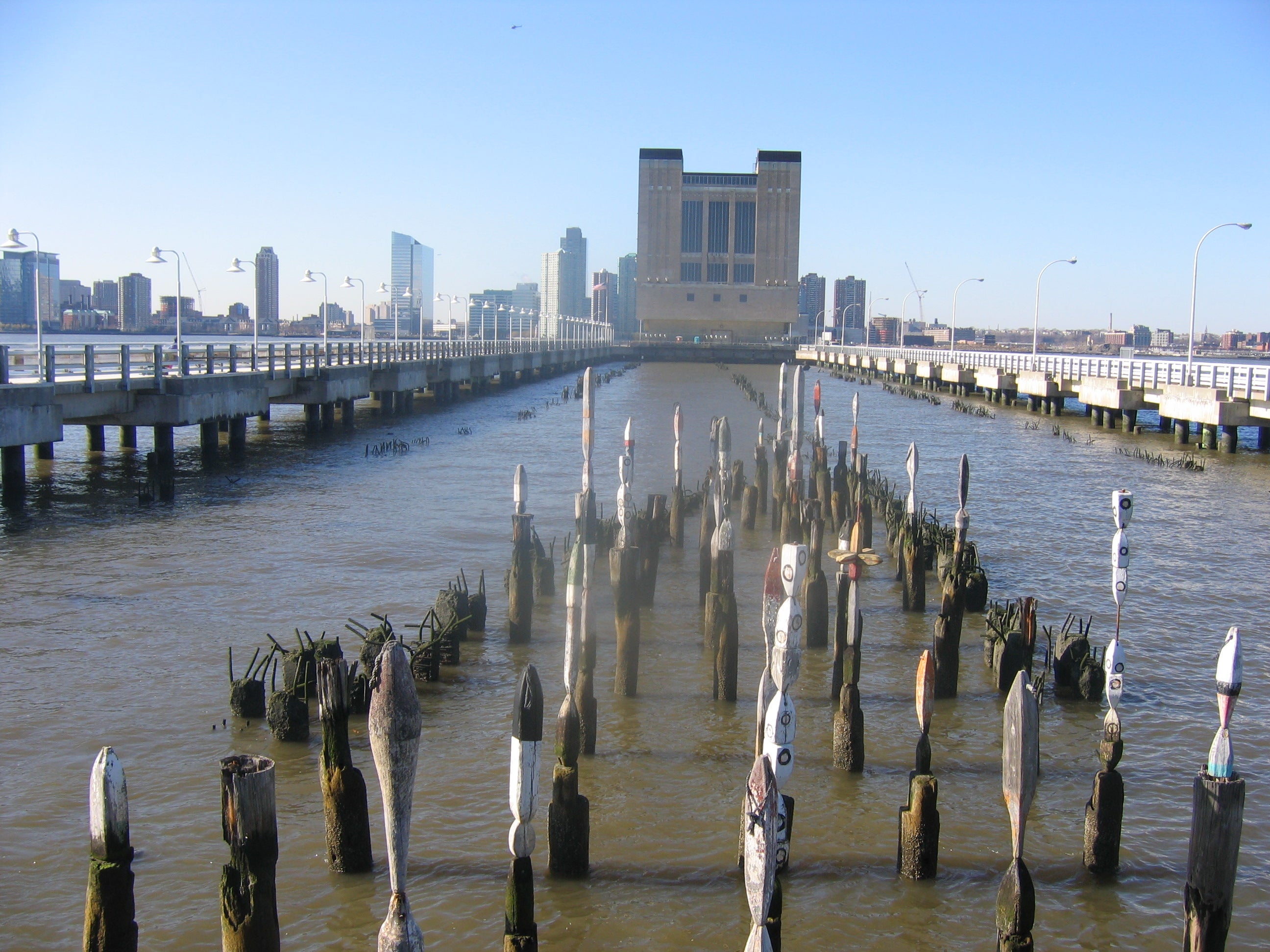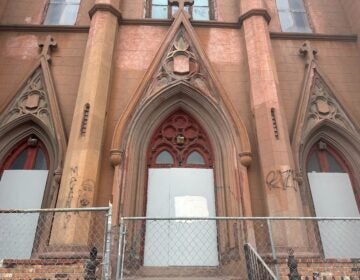Take-aways from the New York City waterfront trip

Riverfront tour impressions
Below are some “take-aways” from members of the Central Delaware Waterfront Advisory Group after a full day of touring renewal sites such as Hudson River Park and Battery Park City and meeting with members of the New York City Planning Commission.
“I was so impressed with goals that they have established in waterfront development. The first goal is to use top quality materials in the construction phase so that in the future if the maintenance funding is below the expected amount the space will keep the quality. The second is the green building requirements they put in place. Specifically they established green building review every 5 years so that the new owners of the buildings cannot deviate from green building principles. The last one is how they approached rezoning ideas. They used a mathematical model, which
included density, design and users.”
Bennur Koksuz
Director, Urban Design Division
Philadelphia City Planning Commission
“While the successes along the Hudson River Riverfront/Route 9A/Battery Park
City were the result of a confluence of several divergent factors, including powerful and influential project champions, resurgence of the importance of parks in the consciousness of New Yorkers, a strong finance and real estate market, and significant alternative post 9/11 funding, the gold standard of NYC Waterfront planning and implementation should be studied in planning for the appropriate scale of Central Delaware River Waterfront redevelopment.”
David Fogel
Director, Long Range Planning
SEPTA
“Design must take into consideration the maintenance of the facility; and inclusion is the key to obtaining community buy-in.”
Benjamin J. Ginsberg, Esq. AICP
Manager of Planning Initiatives
Center City District
“Careful and thoughtful planning along the New York’s West Side has produced delightful public spaces and amenities and a very comfortable human scale of development that stands in stark contrast to the seemingly over-scaled and jumbled redevelopment of the less well regulated Jersey City riverfront across the Hudson, where towers perched on the water’s edge seem ready to tip over into the river. While it is essential to maximize opportunities for the delivery of public amenities through private development, the scale and character of riverfront development itself is critical in shaping the quality of the riverfront experience. It is fundamentally necessary to commit to extensive citizen engagement during the waterfront planning process to ensure community buy in and support for plan implementation later on. Get as much done as quickly as possible that can’t be undone by subsequent administrations. Ensure that the organizations that will be responsible for operating and maintaining riverfront public spaces and amenities are brought into the planning and design process as early as possible. Emphasize the long-term benefits of design and construction quality over short term material cost savings. Finally, I thought it was interesting, that despite strong Mayoral leadership, an empowered city planning department, and fairly abundant resources, that NYC still relies on a range of non-governmental organizations, such as the Hudson River Park Trust and Batter Park City Authority to implement and manage its riverfront development plans.”
Shawn McCaney
William Penn Foundation
“As we walked along this wonderful public riverfront that’s been painstakingly carved out from its unglamourous past, I could hear various members of our group already throwing out very Philadelphian excuses for why our city could never accomplish anything similar.
“Well, they already had the land in public ownership.”
“They’ve got much more density in the nearby neighborhoods.”
“Their state mandated it.”
We must remember that the only thing standing between our current waterfront and the jewel we saw in New York is will. We should be determined to have a world-class public waterfront, and accept no less.”
Shawn Rairigh
NABR
“The Hudson River trial reinforced the importance of building high quality spaces with high quality materials, even if it means you do it in smaller increments. The importance of establishing an overarching vision, not only for the waterfront access but its relationship to adjacent development and the type of development that is permitted adjacent to it. It was interesting to see a variety of operations/maintenance models for the long term care of the space, including fully public, fully private and a mix of the two. In all cases, New York’s incredible density and thriving real estate markets (office, retail and residential each) were driving the initiation, capital and operating funding and use of the spaces. We clearly have fewer resources available to us as a result of a less dynamic market and less density, but we need to figure out how to encourage the marketplace in a way that allows for the same potential.”
John Grady
PIDC
“The trip was a stupendous eye-opener. Inspiring evidence of what can be done — and a daunting challenge. Connie Fishman – exceptional quality of materials used … we should be careful to plan for the “long run”, implement with top quality long lasting infrastructure. Battery Park uncannily reflects our situation — can we sort of replicate? Ellen Ryan: imperative that we work toward zoning code revision. Amanda Burden: response to differing requirements of each area – while overall harmony of design is desirable, must reflect individuality (needs and character) of different locales and residents.”
Marsha B. Bacal
Society Hill Towers
“Start with a detailed Master Plan that encourages inviting open space and avoids long stretches of empty barren space (i.e. parking garages and concrete support walls). You need POLITICAL WILL to implement NEW ZONING for the PLAN. Also need open, green public space that is coordinated and well conceived and maintained drives development.”
John Scorsone
River’s Edge Community Association
“How do we guarantee access to affordable, humane housing when planning for residential development on the riverfront? We saw two different approaches to this question in New York: in Battery Park City no consideration was given to affordable housing ($6500/month rents for a one bedroom!) — market forces are left unchecked, pushing the cost of housing to levels unmanageable by all but the very wealthy; in Greenpoint-Williamsburg we saw that the city has rezoned the waterfront area and created an incentive program which uses private development capital to fund a percentage of affordable housing. The former is untenable, the latter a first step but not without problems. My neighbors in Fishtown and Port Richmond — most of whom have lived there for generations — are in danger of being displaced by the wave of gentrification that is creeping north of center city in the form of rising housing costs and property taxes. How do we create truly public, democratic space on the riverfront, knowing that we will need to most likely partner with private developers? Quasi-public spaces like shopping malls present the illusion of a public commons but our rights as citizens are incredibly limited in such spaces. If the city enters into development cooperations with the private sector. We must be careful to ensure that our open spaces on the riverfront are truly public, truly accessible to all citizens, and afford our guaranteed rights as citizens.”
Jeremy Beaudry
Fishtown Neighbors Association (FNA)
“Sustained, strong leadership is paramount. I think I’m learning this is what’s behind any successful long-range planning effort. Maybe even more critical than broad-based community support (not sure on this). New York appears to be about five years ahead of us, and faced many of the same challenges and opportunities we do, and has made great progress. So, although we don’t want to delay, we have not have yet missed the boat as evidenced by NYC’s success stories. Use of highest quality materials possible, informed by strong design guidelines, makes a statement of commitment up front and assures minimal long-term maintenance problems.”
Alan S. Urek, AICP
Acting Director, Strategic Planning & Policy Division
Philadelphia City Planning Commission
“I appreciated the near absence of commercial/retail along the N.Y. waterfront. Without the presence of commercial/retail, the entire area had the appearance of a genuine amenity for the residents of New York, rather than a tourist area. It would be my hope that we could do the same, or at least group the commercial/retail operations, and leave the great majority of the area a true amenity for the residents of Philadelphia. Much like our East and West River Drives. Very impressed that the planners of the N.Y. waterfront brought in maintenance consultants to work with the architects/designers from the concept phase in order to assure that the final product was maintainable. The concept plan included budget provisions for the maintenance of the waterfront areas. Materials’ quality standards were very impressive. Combined with the maintenance programs and rules/regulations enforcement in place, the current condition of the areas completed was very impressive. Was encouraged that New York was able to re-zone 7,000 blocks of real estate in four years and include new zoning provisions to protect and guide development of the waterfront areas.”
Joe Schiavo
Old City Civic Association
A fascinating day. From the perspective of our work here in Philadelphia I found the team-building that happened among the group to be the most beneficial aspect. The importance of comprehensive zoning reform as a part of the urban planning process was very clear at our meeting with the Planning Commission. For Philadelphia, this would seem to mean a Commission with some muscle. The specific projects we visited were informative and had some transferability to our waterfront. Personally, I found the green technology application at Battery Park to be quite impressive. Perhaps by the time developers are ready to build on our waterfront the cost will have come down enough to make it a practical reality here!
Steven A. Weixler
Society Hill Civic Association
“A very large number of community meetings took place in New York’s riverfront plans. There were 70 meetings for Greenpoint-Williamsburg, and 150 meetings for the East River study. Affordable housing was an element in the riverfront plan for Greenpoint-Williamsburg. “Pile Fields” as part of Hudson River Park (pile fields are remnants of piers being preserved as fish habitat). Scale of buildings; transition between neighborhoods and new riverfront development. Hudson River Park has a long term plan (and funding) for maintenance, upkeep, policing.”
Richard Redding
Director of Community Planning
Philadelphia City Planning Commission
“In terms of physical design, I was impressed with the design and quality of the bike and ped walkways in Hudson River Park. I liked the “modal split” of walker/runner and cyclist/rollerblader paths. The signs and pavement markings for these paths were clear and well considered, especially the double-yellow line dividing directional movement on the “faster moving” path. The materials used for river’s edge promenade (about 18 feet wide as best I could estimate) were very high quality. I also was impressed with the green design of the Solaire residential building, and the public spaces created between buildings in Battery Park City. We should recommend green/sustainable design and LEED certification for all buildings along the Central Delaware Riverfront corridor.
Gary J. Jastrzab
Deputy Executive Director
Philadelphia City Planning Commission
WHYY is your source for fact-based, in-depth journalism and information. As a nonprofit organization, we rely on financial support from readers like you. Please give today.






